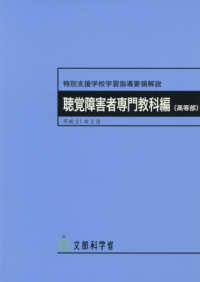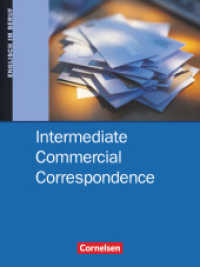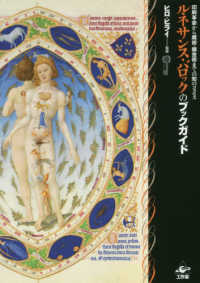Full Description
Building on the pioneering work in supramolecular chemistry from the last 20 years or so, this monograph addresses new and recent approaches to anion coordination chemistry. Synthesis of receptors, biological receptors and metallareceptors, the energetics of anion binding, molecular structures of anion complexes, sensing devices are presented and computational studies addressed to aid with the understanding of the different driving forces responsible for anion complexation. The reader is promised an actual picture of the state of the art for this exciting and constantly evolving field of supramolecular anion coordination chemistry. The topics range from ion channels to selective sensors, making it attractive to all researchers and PhD students with an interest in supramolecular chemistry.
Contents
Preface ASPECTS OF ANION COORDINATION FROM HISTORICAL PERSPECTIVES Introduction Halide and Pseudohalide Anions Oxoanions Phosphate and Polyphosphate Anions Carboxylate Anions and Amino Acids Anionic Complexes: Supercomplex Formation Nucleotides Final Notes Determining the Stability of Anion Complexes Molecular Recognition and Selectivity Enthalpic and Entropic Contributions in Anion Coordination Basic Concepts of Anion Coordination Chemistry Classes of Anion Hosts Acycles Monocycles Cryptands Transition-Metal-Assisted Ligands Lewis Acid Ligands Conclusion SYNTHETIC STRATEGIES Introduction Design and Synthesis of Polyamine-Based Receptors for Anions Design and Synthesis of Amide Receptors TEMPLATE SYNTHESIS Introductory Remarks Macrocyclic Systems Bowl-Shaped Systems Capsule, Cage, and Tube-Shaped Systems Circular Helicates and meso-Helicates Mechanically Linked Systems Concluding Remarks ANION-PI INTERACTIONS IN MOLECULAR RECOGNITION Introduction Physical Nature of the Interaction Energetic and Geometric Features of the Interaction Depending on the Host (Aromatic Moieties) and the Guest (Anions) Influence of Other Noncovalent Interactions on the Anion-Pi Interaction Experimental Examples of Anion-Pi Interactions in the Solid State and in Solution Concluding Remarks RECEPTORS FOR BIOLOGICALLY RELEVANT ANIONS Introduction Phosphate Receptors Carboxylate Receptors Conclusion SYNTHETIC AMPHIPHILIC Introduction and Background Biomedical Importance of Chloride Channels The Development of Synthetic Chloride Channels Approaches to Synthetic Chloride Channels The Development of Amphiphilic Peptides as Anion Channels Structural Variations in the SAT Modular Elements Conclusions Anion Recognition by Dynamic and Static Quenching of Fluorescence Fluorescent Sensors Based on Anthracene and on a Polyamine Framework Turning on Fluorescence with the Indicator Displacement Approach








